A 24 GHz End-Fire Rod Antenna Based on a Substrate Integrated Waveguide
Abstract
1. Introduction
2. Topology of the Rod Antenna
- (1).
- According to reference [35], for the SIW-only single TE10 mode to propagate, , usually . And in this case, is around 0.35. Thickness H1 should adapt to the feasibility of the thickness of Rogers 4350 on the market. Therefore, values of H1 are limited combinations of thickness available on the market, like “0.101 mm, 0.254 mm, 0.508 mm, 0.762 mm, 1.524 mm” and so on. H1 can be optimized easily due to its limited choices. Finally, we chose H1 = 1.524 + 1.524 + 0.76 mm due to its excellent performance in TE10 mode at 24 GHz.
- (2).
- After H1 is determined, W3 can also be determined due to the relationship of H1 = (0.4~0.5) × W3 mentioned in (1). When W3 increases, the SIW will reach the multi-resonance region; when W3 decreases, SIW will have the best performance for the single TE10 mode at 24 GHz; and when W3 decreases further, the resonance frequency will shift up, and become greater than 24 GHz. In this way, W3 is optimized to be 11 mm for the single TE10 mode at 24 GHz. When W3 is equal to 11 mm, the distance between vias holes is 9.15 mm. Inside Rogers 4350 (Dk = 3.48), the wavelength at 24 GHz is 6.7 mm. Therefore, TE30 will not exist. Moreover, the symmetry of the antenna will be less likely to excite mode TE20. Therefore, the SIW still works in wide TE10 mode.
- (3).
- The length of SIW L3 is around a half wavelength. It is optimized and determined when the SIW contains one repeated parcel in the E field animation plot of HFSS.
- (4).
- The gain of this rod antenna can be modified by changing the length of the dielectric rod L4. The gain increases when L4 increases, but it saturates when L4 increases further, greater than around 17 mm. Therefore, in this paper, L4 was set as 17.2 mm. Width W4 was optimized simultaneously with L4 to obtain the best gain performance.
- (5).
- The size of the trapezoid W2, L2 is optimized to obtain the best S11 performance of the entire antenna.
- (6).
- The length of the input microstrip L1 was determined according to the size of the 2.92 mm end launch connector fabricated by Qualwave Inc., Chengdu, China. L1 should be large enough to install the 2.92 mm end launch connector.
- (7).
- As a matter of fact, the input GSG structure affects antenna performance a lot. The input GSG structure is optimized by fabricating and measuring the antenna twice. Optimization of the input GSG structure is as follows.
3. Simulation and Measurement Results of the Rod End-Fire Antenna
4. Discussion
5. Conclusions
Author Contributions
Funding
Institutional Review Board Statement
Informed Consent Statement
Data Availability Statement
Acknowledgments
Conflicts of Interest
References
- Shunshi, Z. Antenna Theory and Techniques; Publishing House of Electronic Industry: Beijing, China, 2011; pp. 115–116. [Google Scholar]
- Mao, Y.; E, S.; Zhu, C. A New and Simple Design Method for End-Fire Dipole Antenna Array and Three Two-Element 24 GHz Planar End-Fire Dipole Antenna Arrays. Appl. Sci. 2021, 11, 7720. [Google Scholar] [CrossRef]
- Mao, Y.; Zhu, C.; E, S.; Cai, J. Three 24 GHz End-Fire Dipole Antennas. Prog. Electromagn. Res. Lett. 2023, 109, 41–48. [Google Scholar] [CrossRef]
- Mao, Y.; E, S. A Compact Wideband 24GHz End-Fire Helix Antenna with High Gain Turn Ratio in Planar Technology. Prog. Electromagn. Res. -PIER Lett. 2020, 89, 121–125. [Google Scholar] [CrossRef]
- Mao, Y.; E, S.; Schmalz, K.; Scheytt, J.C. 245 GHz subharmonic receiver with on-chip antenna for gas spectroscopy application. J. Semicond. 2018, 39, 125001–125006. [Google Scholar] [CrossRef]
- Chen, C.-C. UWB Dielectric Rod Antennas. In Proceedings of the IEEE Antennas and Propagation Society International Symposium (APSURSI), Gothenburg, Sweden, 7–13 July 2013. [Google Scholar]
- Najafabadi, A.M.A.; Ramírez, G.A.; Ghorbanpoor, M.; Vorobyov, A.; Nussbaum, P.; Skrivervik, A. Plug-in Plug-Out Multibeam Dielectric Rod Antenna for Target Dedicated mm-Wave RF-WPT Applications. In Proceedings of the 2024 18th European Conference on Antennas and Propagation (EuCAP), Glasgow, UK, 17–22 March 2024. [Google Scholar]
- Milligan, T. Design of polyrod and corrugated-rod antennas. IEEE Antennas Propag. Mag. 2000, 42, 88–91. [Google Scholar] [CrossRef]
- Kraus, J.D.; Marhefka, R.J. Antennas, 3rd ed.; Electronic Industry Press: Beijing, China, 2008; pp. 66–67. [Google Scholar]
- Gothard, G.K.; Jamison, R.; von Loesecke, J.; Faircloth, D.L. An Additively Manufactured Wideband Dielectric Rod Antenna with Integrated Radome. In Proceedings of the IEEE International Symposium on Antennas and Propagation and INC/USNC-URSI Radio Science Meeting (AP-S/INC-USNC-URSI), Firenze, Italy, 13–20 July 2024. [Google Scholar]
- Wang, F.; Zhao, P.; Zhou, Y.; Wang, C. Effect of Surface Roughness of Dielectric Rod Antenna Used in Phased Array Radar on Radiation Performance. In Proceedings of the 14th International Symposium on Antennas, Propagation and EM Theory (ISAPE), Hefei, China, 23–26 October 2024. [Google Scholar]
- Abumunshar, A.J. KubilaySertel; 5:1 Bandwidth Dielectric Rod Antenna Using a Novel Feed Structure. IEEE Trans. Antennas Propag. 2017, 65, 2208–2214. [Google Scholar] [CrossRef]
- Rousstia, M.W.; Herben, M.H.A.J. 60-GHz Wideband Branchline Coupler and Patch Antenna with Dielectric Rod for Full-Duplex Gigabit Wireless Communication. In Proceedings of the 8th European Conference on Antennas and Propagation, The Hague, The Netherlands, 6–11 April 2014. [Google Scholar]
- Hanham, S.M.; Bird, T.S. A Focal plane Array of Dielectric Rod Antennas for THz Imaging. In Proceedings of the 5th European Conference on Antennas and Propagation (EUCAP), Rome, Italy, 11–15 April 2011. [Google Scholar]
- Cao, S.; Li, J. A High Efficiency Twin Coil Ferrite Rod Antenna for RF Energy Harvesting in AM Band. In Proceedings of the 5th International Conference on Enterprise Systems (ES), Beijing, China, 22–24 September 2017. [Google Scholar]
- Lin, S.; Mao, Y.; Bi, Y.; Wang, L.; Zhang, H. A High Gain Dielectric Rod Antenna with Small Aperture and Wide Band. In Proceedings of the International Symposium on Antennas and Propagation (ISAP), Phuket, Thailand, 30 October–2 November 2017. [Google Scholar]
- Reiter, L.; Böge, A.; Negut, A.; Lindenmeier, S. A new low-cost active rod antenna for automotive reception of all terrestrial audio broadcast services. In Proceedings of the 8th European Conference on Antennas and Propagation (EuCAP 2014), The Hague, The Netherlands, 6–11 April 2014. [Google Scholar]
- Nasir, M.; Xia, Y.; Jiang, M.; Zhu, Q. A Novel Integrated Yagi–Uda and Dielectric Rod Antenna With Low Sidelobe Level. IEEE Trans. Antennas Propag. 2019, 67, 2751–2756. [Google Scholar] [CrossRef]
- Xu, K.; Yuan, Y.-N.; Wu, H.-B.; Wu, R.-X. Reconfigurable Low RCS Antenna Using a Ring-Shaped Ferrite Rod Array. In Proceedings of the IEEE 12th Asia-Pacific Conference on Antennas and Propagation (APCAP), Nanjing, China, 22–25 September 2024. [Google Scholar]
- Wang, F.; Zhao, P.; Zhou, Y.; Wang, C. Effect of Displacement Error of Dielectric Rod Antenna Used in Phased Array Radar on Radiation Performance. In Proceedings of the 14th International Symposium on Antennas, Propagation and EM Theory (ISAPE), Hefei, China, 23–26 October 2024. [Google Scholar]
- Tognolatti, L.; Baccarelli, P.; Ponti, C.; Ceccuzzi, S.; Jandieri, V.; Schettini, G. Measured Performance of Dielectric Rod EBG Leaky-Wave Antenna. In Proceedings of the International Conference on Electromagnetics in Advanced Applications (ICEAA), Lisbon, Portugal, 2–6 September 2024. [Google Scholar]
- Cioci, L.; Jandieri, V.; Fuscaldo, W.; Burghignoli, P.; Baccarelli, P. Tunable THz Leaky-Wave Radiation from Periodic Chains of Graphene-Coated Circular Rods. IEEE Antennas Wirel. Propag. Lett. 2024, 23, 3739–3743. [Google Scholar] [CrossRef]
- Wu, M.; Li, Y.; Wang, J. A High-Gain Sleeve Loaded Dielectric Rod Antenna for Millimeter-Wave Applications. In Proceedings of the 2024 15th Global Symposium on Millimeter-Waves & Terahertz (GSMM), Hongkong, 20–22 May 2024. [Google Scholar]
- Wang, L.; Lin, S.; Wang, Y.; Zhang, X.; Zhang, X. An S-band Dielectric Rod Antenna Based on Substrate Integrated Waveguide (SIW) Technology. In Proceedings of the IEEE International Symposium on Antennas And Propagation (ISAP), Kuala Lumpur, Malaysia, 30 October–2 November 2023. [Google Scholar]
- Huang, S.; Chan, K.Y.; Ramer, R. 3D Printed Wideband Dielectric Rod Antenna with Surface Wave Manipulation at a Low Cost. In Proceedings of the IEEE APS, Singapore, 4–10 December 2021. [Google Scholar]
- Le, D.T.H.; Le, M.T.; Cabon, B.; Vuong, T.P. A broadband high gain SIW dielectric rod antenna. In Proceedings of the International Conference on Advanced Technologies for Communications, Hanoi, Vietnam, 17–19 October 2019. [Google Scholar]
- Saiz, N.; Dolatsha, N.; Arbabian, A. A 135GHz SiGe transmitter with a dielectric rod antenna-in-package for high EIRP/channel arrays. In Proceedings of the IEEE Custom Integrated Circuits Conference, San Jose, CA, USA, 15–17 September 2014. [Google Scholar]
- Baranwal, A.K.; Mohan, A.; Pathak, N.P. Wideband High-Gain Dielectric Lens Integrated with Tapered Rod Antenna for W-Band Applications. IEEE Antennas Wirel. Propag. Lett. 2025, 24, 63–67. [Google Scholar] [CrossRef]
- Chen, L.; Ren, L.; Li, H.; Yang, Z.; Deng, H. A Structurally Integrated Design of the Dielectric Flange and Millimeter-Wave Dielectric Rod Antenna. In Proceedings of the IEEE International Conference on Computational Electromagnetics (ICCEM), Nanjing, China, 15–17 April 2024. [Google Scholar]
- Cheng, Y.; Dong, Y. Broadband 3D-Printed Dielectric Rod Antenna with a Flat Peak Gain Over a Wide Bandwidth. In Proceedings of the IEEE MTT-S International Wireless Symposium (IWS), Beijing, China, 16–19 May 2024. [Google Scholar]
- Faisal, F.; Zerfaine, A.; Chaker, M.; Djerafi, T. Inexpensive 3D Printable High Gain Dielectric Rod Antenna for mm- Wave Applications. In Proceedings of the IEEE International Symposium on Antennas and Propagation and INC/USNC-URSI Radio Science Meeting (AP-S/INC-USNC-URSI), Firenze, Italy, 14–19 July 2024. [Google Scholar]
- Prasad, C.S. Substrate Integrated Waveguide Fed Dielectric Rod Filtenna. In Proceedings of the IEEE Wireless Antenna and Microwave Symposium (WAMS), Visakhapatnam, India, 29 February–3 March 2024. [Google Scholar]
- Ikamas, K.; But, D.B.; Anbinderis, M.; Vizbaras, D.; Ivonyak, Y.; Xenidis, N. Sub-THz dielectric rod waveguide-coupled CMOS field-effect transistor based detectors and sources. In Proceedings of the 49th International Conference on Infrared, Millimeter, and Terahertz Waves (IRMMW-THz), Perth, Australia, 24–29 August 2024. [Google Scholar]
- Cheng, Y.; Dong, Y. Ultra-Wideband Low-cost Light-weight 3D-Printed Dielectric Rod Antenna. In Proceedings of the IEEE International Symposium on Antennas and Propagation and INC/USNC-URSI Radio Science Meeting (AP-S/INC-USNC-URSI), Firenze, Italy, 14–19 July 2024. [Google Scholar]
- Xie, C.; Rao, K. Electromagnetic Fields and Waves; Higher Education Press: Beijing, China, 2005; pp. 276–277. [Google Scholar]


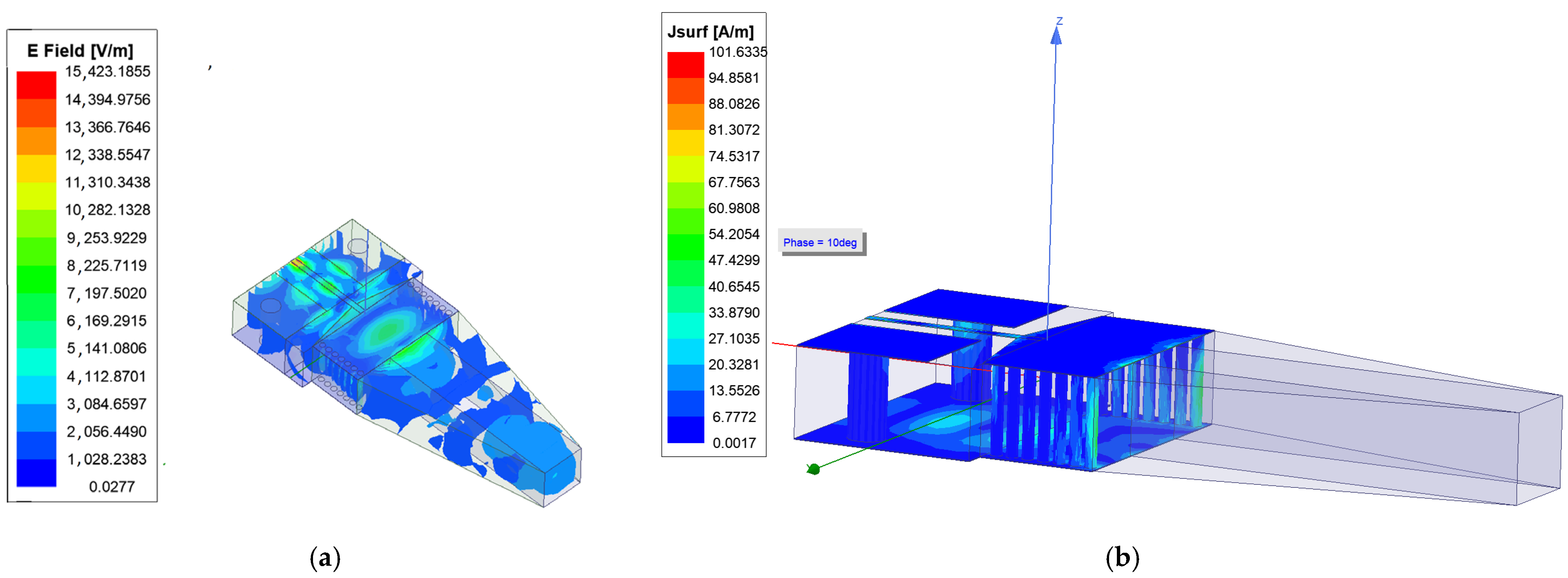
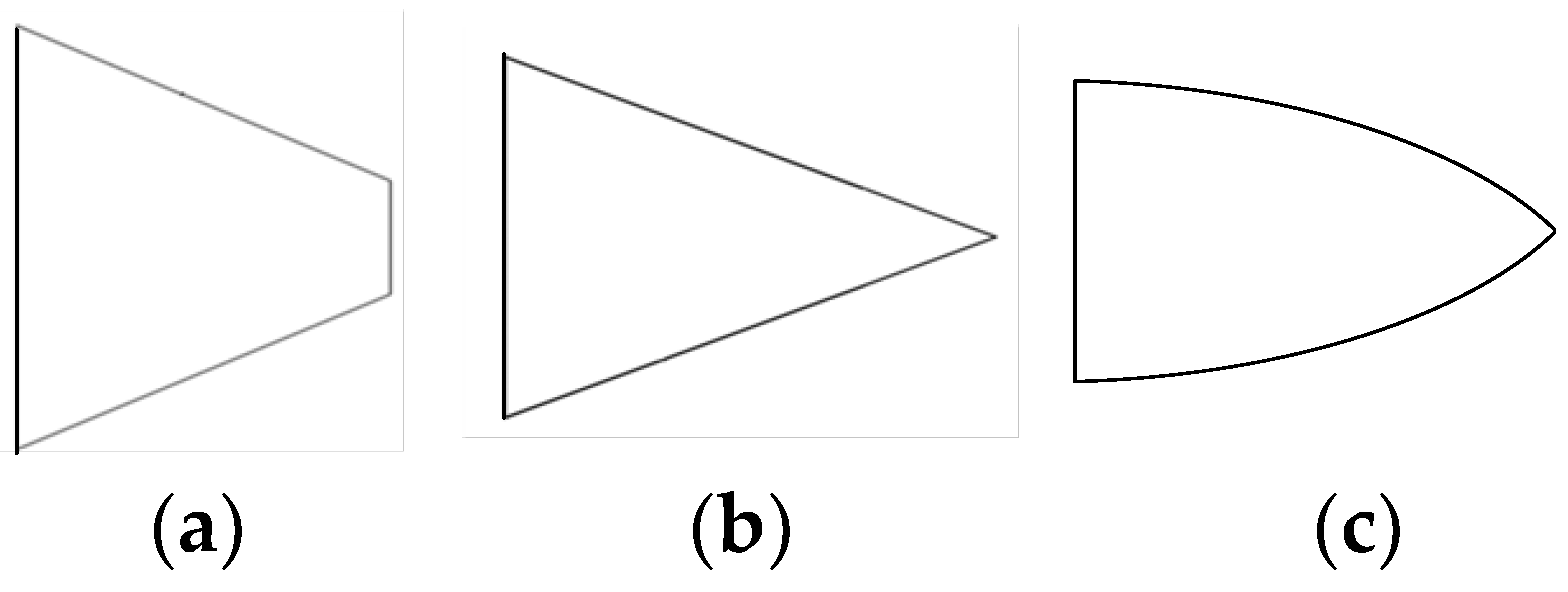
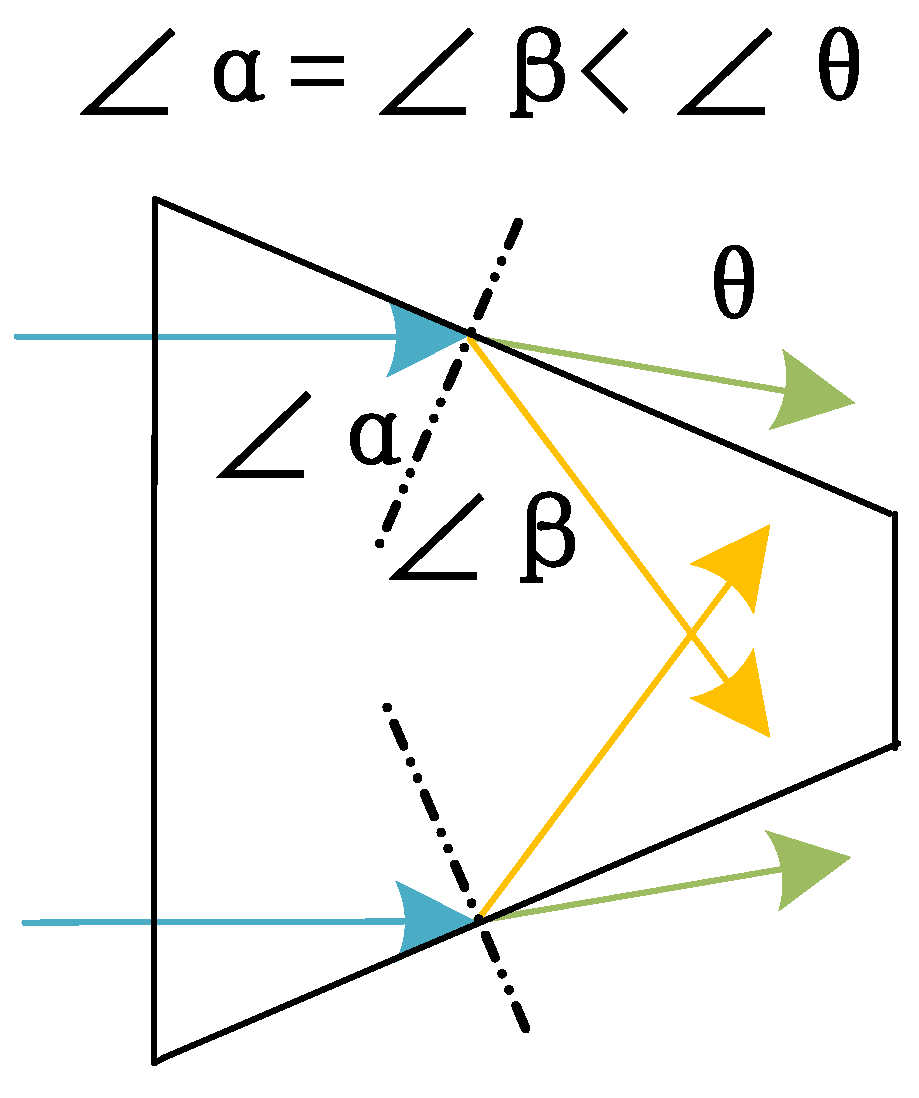




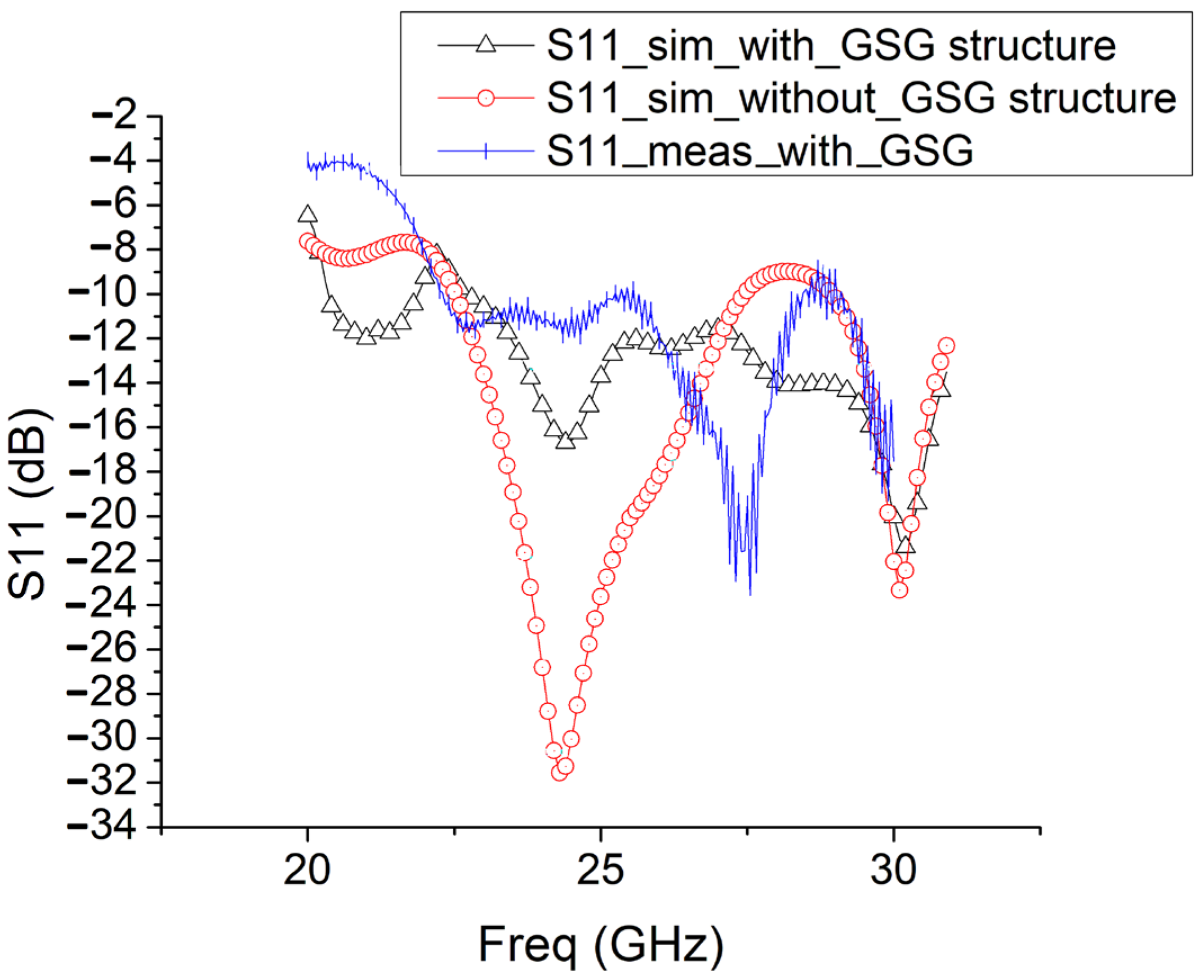
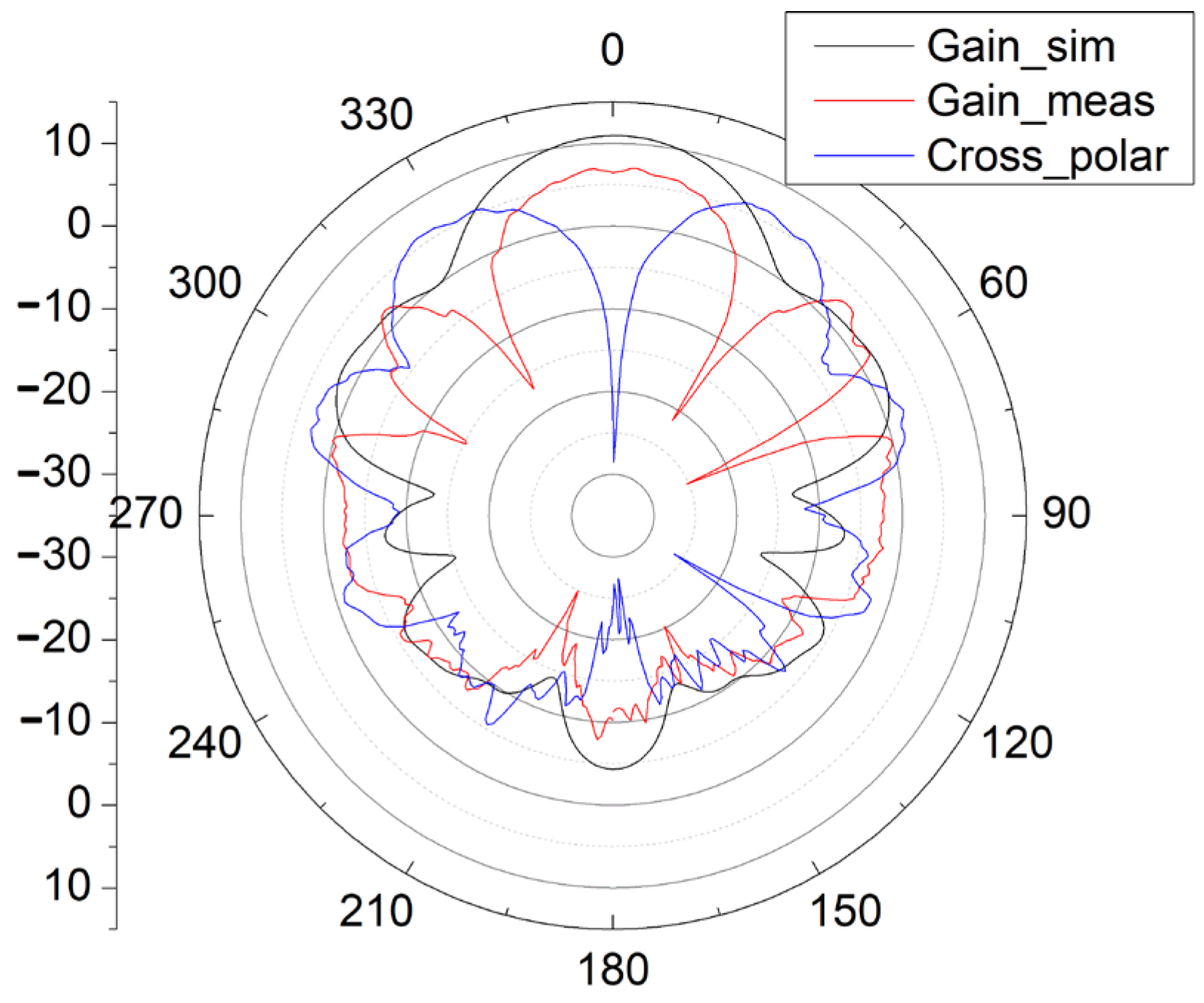
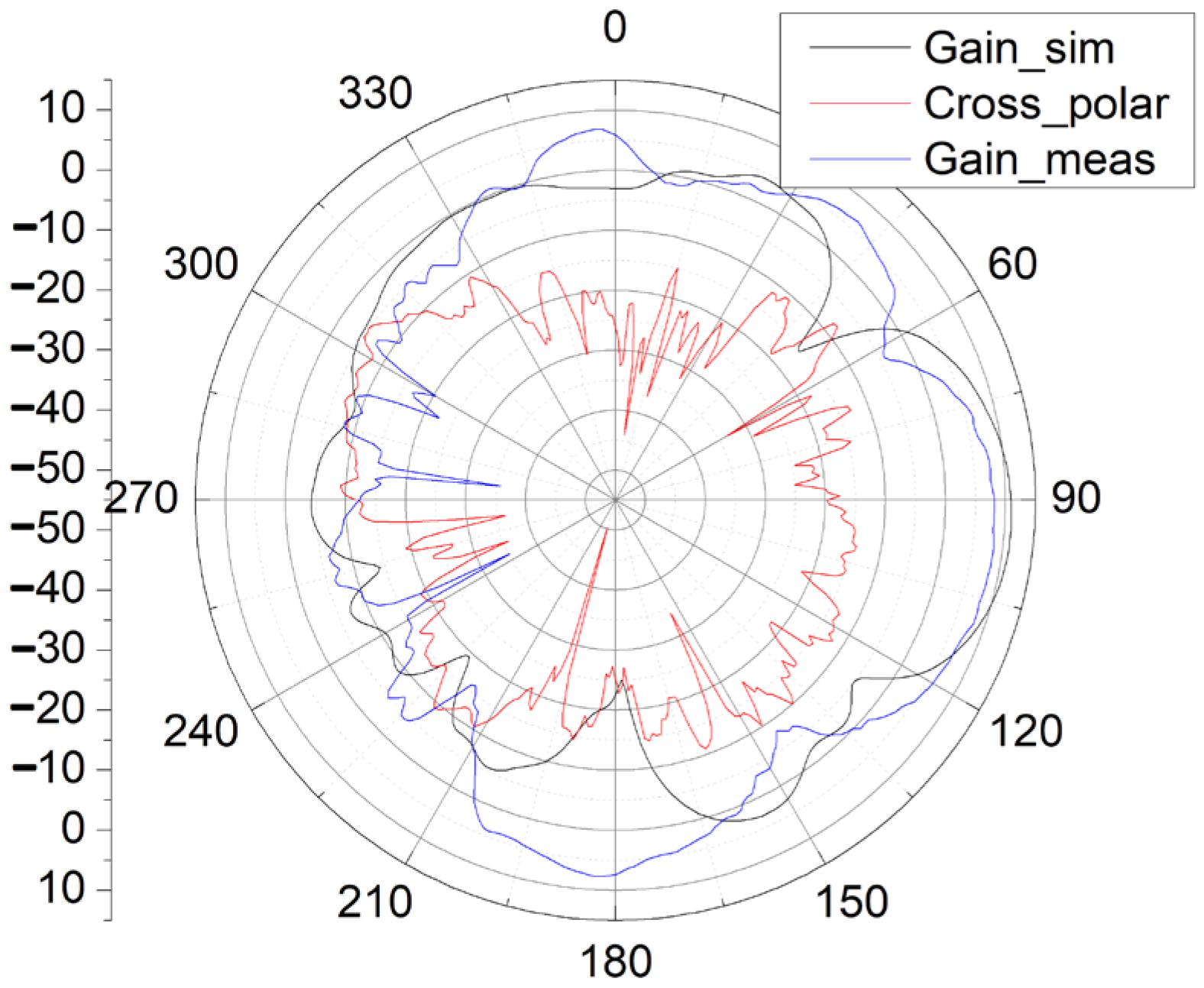
| Parameters | Values (mm) |
|---|---|
| W1 | 0.5 |
| W2 | 5.25 |
| W3 | 11 |
| W4 | 4 |
| H1 | 3.8 |
| L1 | 7.8 |
| L2 | 1 |
| L3 | 5 |
| L4 | 17.2 |
| Working Freq (GHz) | Antenna Gain (dBi) | Size | Bandwidth (GHz) | Architecture | |
|---|---|---|---|---|---|
| [24] | 3.5 | 8.5 (sim) | 24.8 cm × 62.4 × 1.36 cm | 3.14–3.8 (sim) | Dielectric rod antenna based on an SIW |
| [25] | 24 | 12.7 | 69.6 mm × 10.7 mm × 6 mm | 19.5–28.5 | 3D-printed dielectric rod antenna for surface wave manipulation |
| [26] | 36 | 11 (sim) | 44.75 mm × 9.5 mm × 0.058 mm | 24–50 (sim) | Dielectric rod antenna with an antipodal Vivaldi based on an SIW |
| [27] | 135 | 10.3 | N/A | 128–142 | Rod antenna with a Yagi dipole unit-in-package |
| [28] | 92.5 | 23.9 | 65 mm × 29 mm | 75–100 | Dielectric lens integrated with a tapered rod antenna using a perforated H-guide |
| [29] | 28 | 10.5 (sim) | 50 mm × 50 mm × 100 mm | 26.5–30.5 | A structurally integrated design of the dielectric flange and dielectric rod antenna (DRA) |
| [30] | 11 | 14.9 | 20.3 mm × 39 mm × 163 mm | 6–16 | A broadband 3D-printed dielectric rod antenna |
| [31] | 30 | 20 (sim) | >150 mm | 26–40 | A dielectric rod antenna (DRA) with inexpensive 3D printing processes |
| [32] | 10 | 9 | 40.2 mm × 35.5 mm × 30 mm | 9.71–10.21 | A substrate integrated waveguide (SIW)-based band pass filter is used to feed the dielectric rod through a slot |
| [34] | 11 | 13.3 | 130 mm × 40 mm × 15 mm | 6–16 | A microstrip-line-excited ultra-wideband dielectric rod antenna manufactured using 3D printing technology |
| This work | 24 | 8.55 | 30 mm × 13 mm × 3.8 mm | 22.2–28.5 | A rod antenna based on a SIW |
Disclaimer/Publisher’s Note: The statements, opinions and data contained in all publications are solely those of the individual author(s) and contributor(s) and not of MDPI and/or the editor(s). MDPI and/or the editor(s) disclaim responsibility for any injury to people or property resulting from any ideas, methods, instructions or products referred to in the content. |
© 2025 by the authors. Licensee MDPI, Basel, Switzerland. This article is an open access article distributed under the terms and conditions of the Creative Commons Attribution (CC BY) license (https://creativecommons.org/licenses/by/4.0/).
Share and Cite
Mao, Y.; E, S.; Zhang, Y.; Lai, W.-c. A 24 GHz End-Fire Rod Antenna Based on a Substrate Integrated Waveguide. Sensors 2025, 25, 1636. https://doi.org/10.3390/s25051636
Mao Y, E S, Zhang Y, Lai W-c. A 24 GHz End-Fire Rod Antenna Based on a Substrate Integrated Waveguide. Sensors. 2025; 25(5):1636. https://doi.org/10.3390/s25051636
Chicago/Turabian StyleMao, Yanfei, Shiju E, Yu Zhang, and Wen-cheng Lai. 2025. "A 24 GHz End-Fire Rod Antenna Based on a Substrate Integrated Waveguide" Sensors 25, no. 5: 1636. https://doi.org/10.3390/s25051636
APA StyleMao, Y., E, S., Zhang, Y., & Lai, W.-c. (2025). A 24 GHz End-Fire Rod Antenna Based on a Substrate Integrated Waveguide. Sensors, 25(5), 1636. https://doi.org/10.3390/s25051636







